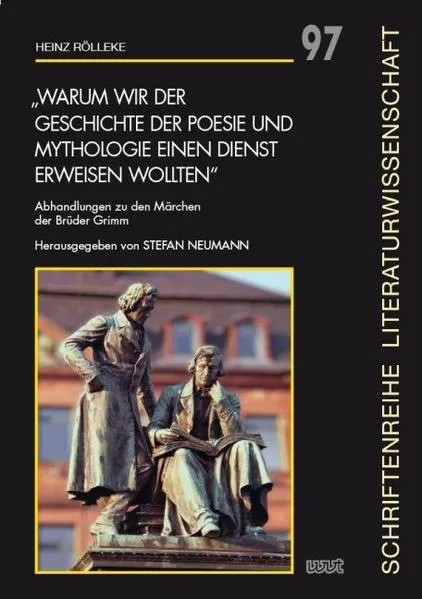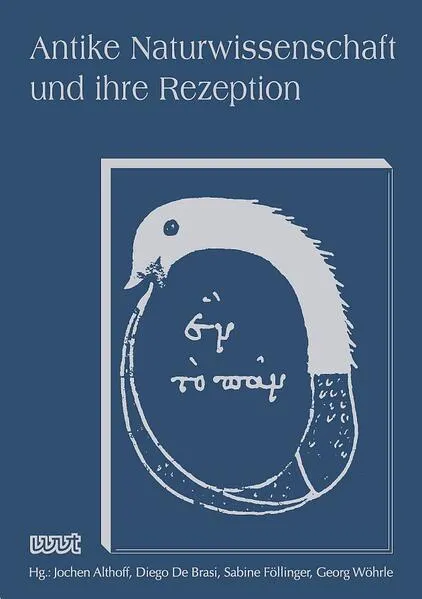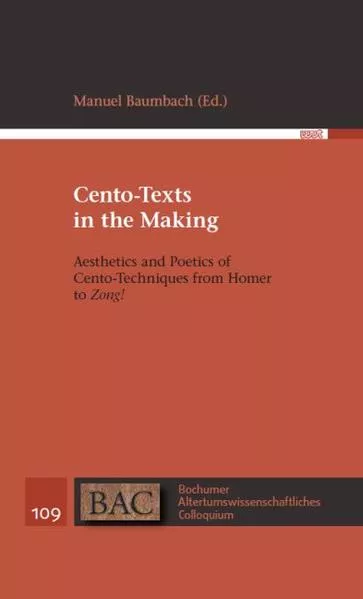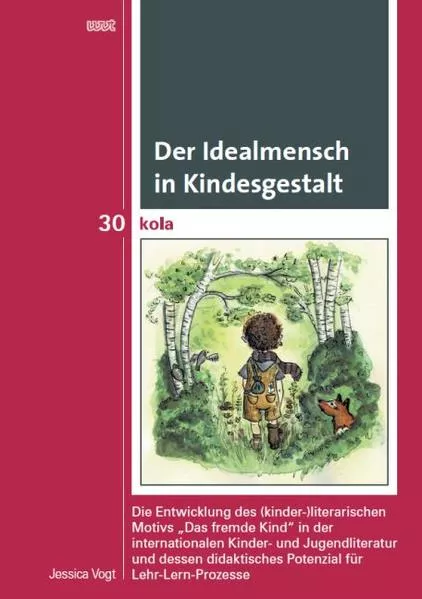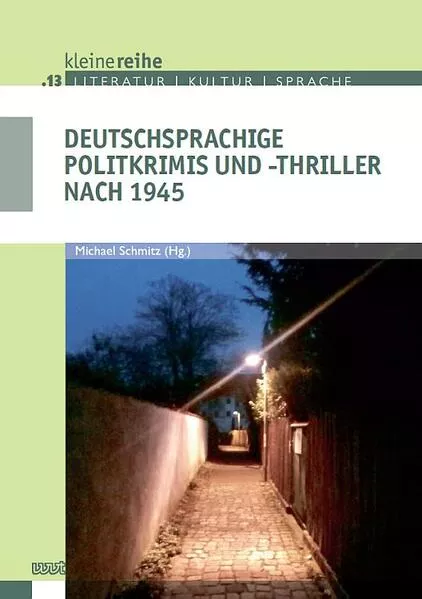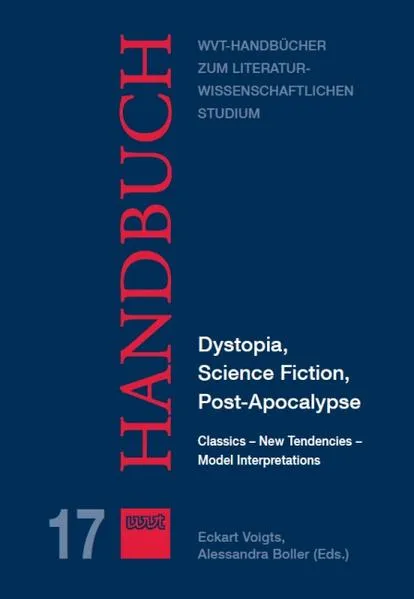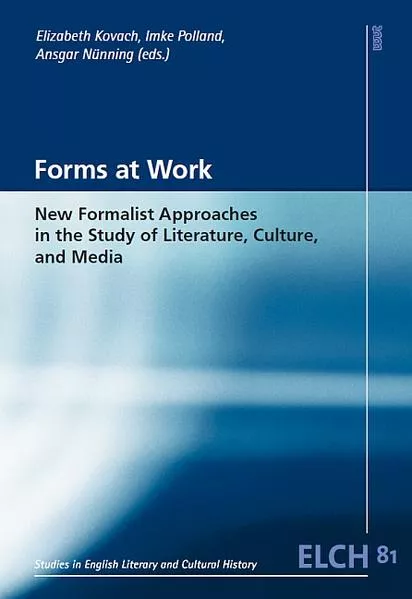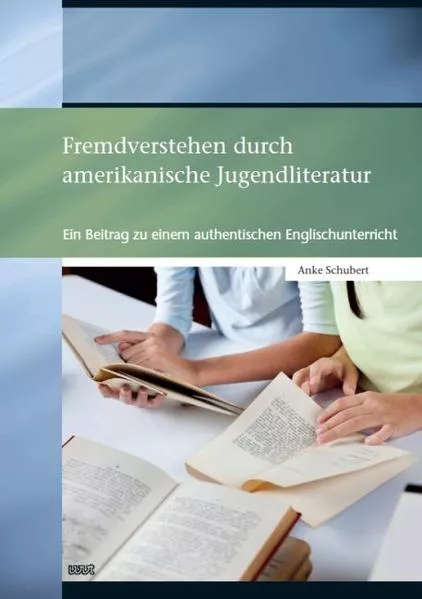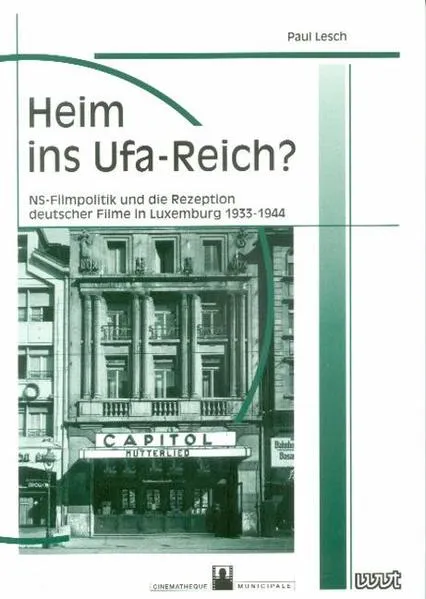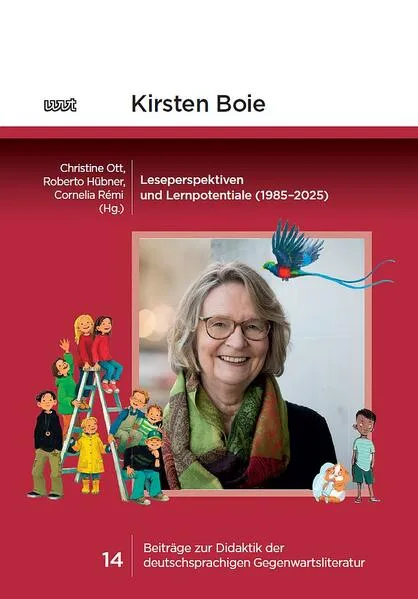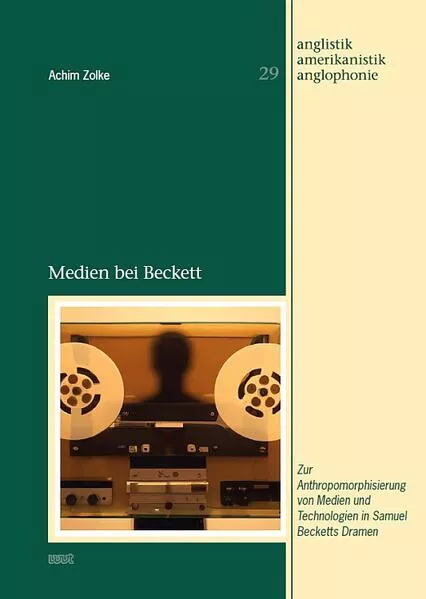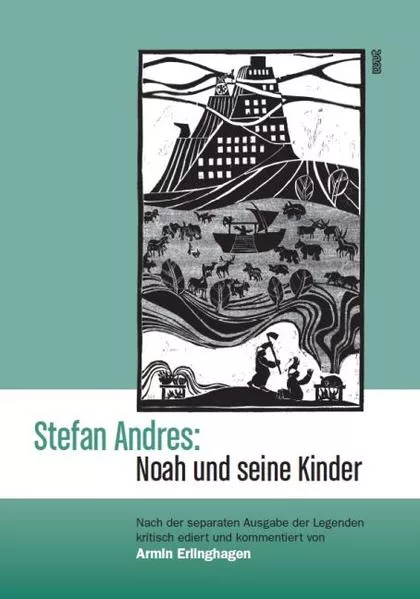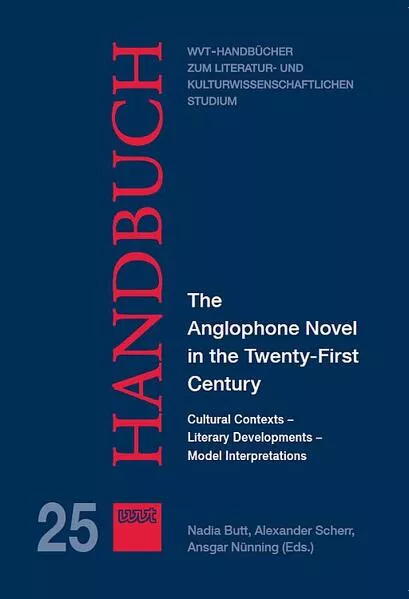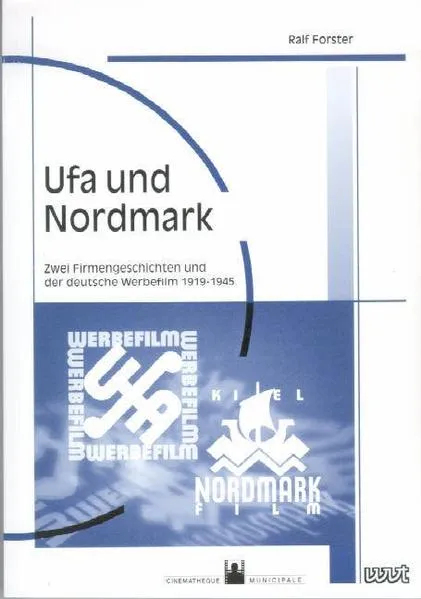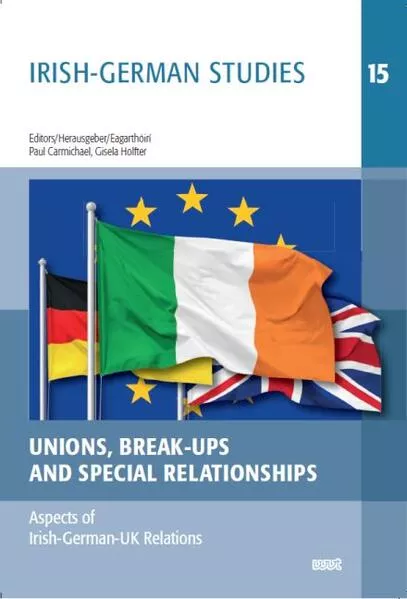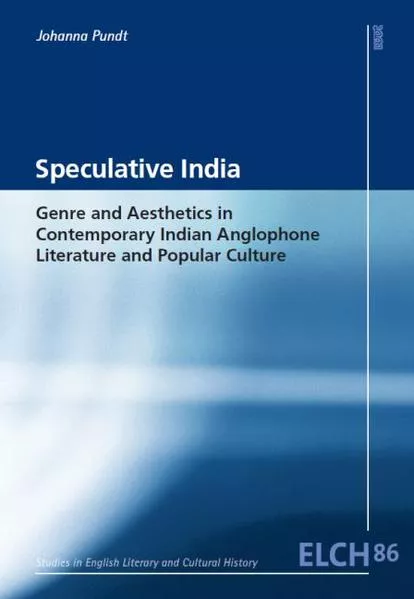
Johanna Pundt
Speculative India
- Genre and Aesthetics in Contemporary Indian Anglophone Literature and Popular Culture
ISBN: 978-3-868-21949-4
272 Seiten | € 36.50
Buch [Taschenbuch]
Dieses Buch gehört zur Reihe Studies in English Literary and Cultural History (ELCH) /Studien zur Englischen Literatur- und Kulturwissenschaft (ELK) und enthält ca. 2 Folgen.
Erscheinungsdatum:
19.04.2022
Roman
Johanna Pundt
Speculative India
Genre and Aesthetics in Contemporary Indian Anglophone Literature and Popular Culture
Speculative India analyses the trans-generic mode of the speculative in Indian Anglophone literature and popular culture to dialogize established genre taxonomies with concepts of literary realism and postcolonial theory. The works analysed in this study transgress generic boundaries and combine various themes, aesthetics and techniques to centre previously marginalized worldviews, sometimes expressing perceptions that surpass the knowable and scientifically verifiable. To make sense of the liminality of works situated between the seemingly diametrically opposed extremes of realism and anti-realist fiction, this study introduces the concept of para-realism with its three formal strategies of estrangement, extrapolation and augmentation. Estrangement serves as a framework to discuss how recent speculative fiction engages with the gender dynamics of the vast Ramayana tradition. Extrapolation, in turn, is discernible in Manjula Padmanabhan’s play Harvest, Priya Sarukkai Chabria’s novel Generation 14 and Vandana Singh’s short story “Delhi” which envision the (posthuman) future by looking back on Indian history and hence repeatedly unsettle linear concepts of time. This ties in with the concept of augmentation as a form of enhancement, which is central to the negotiation of the chances and pitfalls of both nationalism and globalization in Rakesh Roshan’s film Koi... Mil Gaya, its two Krrish sequels as well as in two of Samit Basu’s superhero novels. In its use of para-realism, the speculative not only reveals its rootedness in extratextual epistemologies and ontologies but also turns into a worlding project that draws attention to the diverse experiences of being in the world.
CONTENTS
I. INTRODUCTION SPECULATIVE INDIA .................................................................. 1
Coming to Terms: Indian Anglophone Speculative Fiction .................................. 2
Creating Para-Realism: Estrangement, Extrapolation and Augmentation .......... 10
II. THE HISTORY AND POLITICS OF SPECULATIVE FICTION ................................ 17
Speculative Fiction as ‘Soft’ Science Fiction ..................................................... 18
Delineating a Postcolonial Counter-Discourse.................................................... 20
Speculative Fiction and the Fantastic .................................................................. 24
Debating (Im-)Possibility .................................................................................... 27
The Formation of Para-Realism .......................................................................... 28
III. FAMILIARIZATION AND ESTRANGEMENT IN CONTEMPORARY RAMAYANAS ... 34
Estranging the Familiar, Familiarizing the Strange ............................................. 34
The Ramayana Tradition: Contexts and Contestations ....................................... 37
Sita in Speculative Fiction .................................................................................. 46
3.1 Vedic Ideals in Future Contexts: The Ramayan 3392 A.D. Comics ................... 48
Familiar Characters in an Estranged World ........................................................ 49
Disciplining Seeta ............................................................................................... 54
‘Being Sita’ in the Future .................................................................................... 59
3.2 Finding Sita in Samhita Arni’s The Missing Queen ............................................ 61
Speculative Fiction and Formal Estrangement .................................................... 62
The Unknowable Sita .......................................................................................... 65
From Itihasa to Historiographic Metafiction ...................................................... 70
3.3 From Ramayana to Sitayana: Swapna Kishore’s “Regressions” ........................ 73
Becoming Sita ..................................................................................................... 74
A Women’s Ramayana ....................................................................................... 80
Storytelling as Empowerment ............................................................................. 83
IV. EXTRAPOLATION AND THE SPECULATIVE: IMAGINING THE FUTURE INDIA ... 85
Theorizing Extrapolation .................................................................................... 85
The Roots of the Future ...................................................................................... 90
Extrapolation in Speculative Fiction ................................................................... 96
4.1 The Posthuman Future in Manjula Padmanabhan’s Harvest .............................. 97
Extrapolation and the Future’s Past .................................................................. 100
“That’s a special bond”: Organ Trafficking and (Dis-)Empowerment ............. 103
Becoming Posthuman ....................................................................................... 107
Reclaiming Agency ........................................................................................... 115
Extrapolation and Para-Realism ........................................................................ 119
4.2 Reframing the Roots of the Future in
Priya Sarukkai Chabria’s Generation 14 .......................................................... 120
History from Below .......................................................................................... 123
Collapsing Time: The Future is the Past is the Future ...................................... 129
Seeking Empowerment in the Past .................................................................... 134
The Prospects of Tomorrow .............................................................................. 138
4.3 Spacetime: Multiple Temporalities in Vandana Singh’s “Delhi” ..................... 139
Looking Beyond the Present ............................................................................. 141
The Past is Still Happening ............................................................................... 145
“A History of the Future” .................................................................................. 149
Extrapolating Delhi ........................................................................................... 153
V. SPECULATIVE FICTION, AUGMENTATION AND THE NATION ......................... 155
Augmentation and Para-Realism ....................................................................... 155
Superpowered World Scenarios ........................................................................ 157
Truth and Justic beyond the American Way:
Superheroes in Indian Popular Culture ............................................................. 161
Augmented Bodies and the Nation ................................................................... 163
5.1 Of Aliens and Gods: Nationalism, Vedic Science and
Religious Para-Realism in Rakesh Roshan’s Superhero Universe .................... 168
Vedic Science in Koi… Mil Gaya ..................................................................... 171
Koi… Mil Gaya and Religious Nationalism ..................................................... 175
Healing the Hero ............................................................................................... 179
Provisional Diasporas and the Return ‘Home’ Narrative .................................. 183
Healing the Nation ............................................................................................ 188
Imagining the Krrish Nation ............................................................................. 192
5.2 Contested World Orders and Global Heroes
in Samit Basu’s Turbulence and Resistance ..................................................... 193
Postnational Ideoscapes and the Turn Towards the Global ............................... 195
Global Flows of Superpowers and (Post-)Empire Geographies ........................ 202
The Superpowered Elite: Negotiating the Boundaries of the Human ............... 210
VI. EYES OF TIME: ENVISIONING THE PAST, PRESENT
AND FUTURE OF INDIAN ANGLOPHONE SPECULATIVE FICTION ................... 220
Estranging the Ramayana: Sita Refusing to be Sita .......................................... 223
Extrapolating a Future with a Past .................................................................... 226
Augmented (Super-)Humans and the Nation .................................................... 229
From Indian Anglophone Speculative Fiction
towards World/ing Speculative Fiction? ........................................................... 233
WORKS CITED .......................................................................................................... 237
CONTENTS
I. INTRODUCTION SPECULATIVE INDIA .................................................................. 1
Coming to Terms: Indian Anglophone Speculative Fiction .................................. 2
Creating Para-Realism: Estrangement, Extrapolation and Augmentation .......... 10
II. THE HISTORY AND POLITICS OF SPECULATIVE FICTION ................................ 17
Speculative Fiction as ‘Soft’ Science Fiction ..................................................... 18
Delineating a Postcolonial Counter-Discourse.................................................... 20
Speculative Fiction and the Fantastic .................................................................. 24
Debating (Im-)Possibility .................................................................................... 27
The Formation of Para-Realism .......................................................................... 28
III. FAMILIARIZATION AND ESTRANGEMENT IN CONTEMPORARY RAMAYANAS ... 34
Estranging the Familiar, Familiarizing the Strange ............................................. 34
The Ramayana Tradition: Contexts and Contestations ....................................... 37
Sita in Speculative Fiction .................................................................................. 46
3.1 Vedic Ideals in Future Contexts: The Ramayan 3392 A.D. Comics ................... 48
Familiar Characters in an Estranged World ........................................................ 49
Disciplining Seeta ............................................................................................... 54
‘Being Sita’ in the Future .................................................................................... 59
3.2 Finding Sita in Samhita Arni’s The Missing Queen ............................................ 61
Speculative Fiction and Formal Estrangement .................................................... 62
The Unknowable Sita .......................................................................................... 65
From Itihasa to Historiographic Metafiction ...................................................... 70
3.3 From Ramayana to Sitayana: Swapna Kishore’s “Regressions” ........................ 73
Becoming Sita ..................................................................................................... 74
A Women’s Ramayana ....................................................................................... 80
Storytelling as Empowerment ............................................................................. 83
IV. EXTRAPOLATION AND THE SPECULATIVE: IMAGINING THE FUTURE INDIA ... 85
Theorizing Extrapolation .................................................................................... 85
The Roots of the Future ...................................................................................... 90
Extrapolation in Speculative Fiction ................................................................... 96
4.1 The Posthuman Future in Manjula Padmanabhan’s Harvest .............................. 97
Extrapolation and the Future’s Past .................................................................. 100
“That’s a special bond”: Organ Trafficking and (Dis-)Empowerment ............. 103
Becoming Posthuman ....................................................................................... 107
Reclaiming Agency ........................................................................................... 115
Extrapolation and Para-Realism ........................................................................ 119
4.2 Reframing the Roots of the Future in
Priya Sarukkai Chabria’s Generation 14 .......................................................... 120
History from Below .......................................................................................... 123
Collapsing Time: The Future is the Past is the Future ...................................... 129
Seeking Empowerment in the Past .................................................................... 134
The Prospects of Tomorrow .............................................................................. 138
4.3 Spacetime: Multiple Temporalities in Vandana Singh’s “Delhi” ..................... 139
Looking Beyond the Present ............................................................................. 141
The Past is Still Happening ............................................................................... 145
“A History of the Future” .................................................................................. 149
Extrapolating Delhi ........................................................................................... 153
V. SPECULATIVE FICTION, AUGMENTATION AND THE NATION ......................... 155
Augmentation and Para-Realism ....................................................................... 155
Superpowered World Scenarios ........................................................................ 157
Truth and Justic beyond the American Way:
Superheroes in Indian Popular Culture ............................................................. 161
Augmented Bodies and the Nation ................................................................... 163
5.1 Of Aliens and Gods: Nationalism, Vedic Science and
Religious Para-Realism in Rakesh Roshan’s Superhero Universe .................... 168
Vedic Science in Koi… Mil Gaya ..................................................................... 171
Koi… Mil Gaya and Religious Nationalism ..................................................... 175
Healing the Hero ............................................................................................... 179
Provisional Diasporas and the Return ‘Home’ Narrative .................................. 183
Healing the Nation ............................................................................................ 188
Imagining the Krrish Nation ............................................................................. 192
5.2 Contested World Orders and Global Heroes
in Samit Basu’s Turbulence and Resistance ..................................................... 193
Postnational Ideoscapes and the Turn Towards the Global ............................... 195
Global Flows of Superpowers and (Post-)Empire Geographies ........................ 202
The Superpowered Elite: Negotiating the Boundaries of the Human ............... 210
VI. EYES OF TIME: ENVISIONING THE PAST, PRESENT
AND FUTURE OF INDIAN ANGLOPHONE SPECULATIVE FICTION ................... 220
Estranging the Ramayana: Sita Refusing to be Sita .......................................... 223
Extrapolating a Future with a Past .................................................................... 226
Augmented (Super-)Humans and the Nation .................................................... 229
From Indian Anglophone Speculative Fiction
towards World/ing Speculative Fiction? ........................................................... 233
WORKS CITED .......................................................................................................... 237
Unterstütze den lokalen Buchhandel
Nutze die PLZ-Suche um einen Buchhändler in Deiner Nähe zu finden.
Bestelle dieses Buch im Internet
| Veröffentlichung: | 19.04.2022 |
| Höhe/Breite/Gewicht | H 22,5 cm / B 15,5 cm / 498 g |
| Seiten | 272 |
| Art des Mediums | Buch [Taschenbuch] |
| Preis DE | EUR 36.50 |
| Preis AT | EUR 37.60 |
| Reihe | Studies in English Literary and Cultural History (ELCH) /Studien zur Englischen Literatur- und Kulturwissenschaft (ELK) 86 |
| ISBN-13 | 978-3-868-21949-4 |
| ISBN-10 | 3868219498 |



